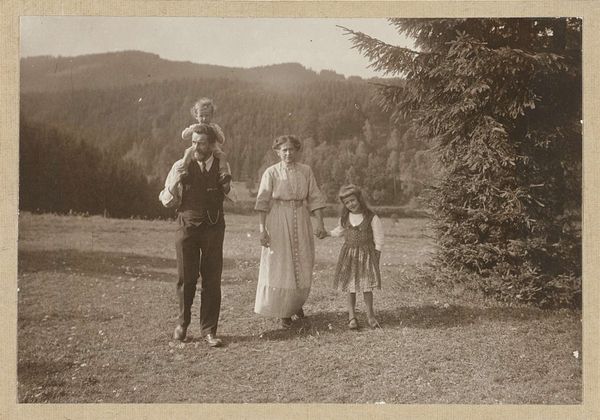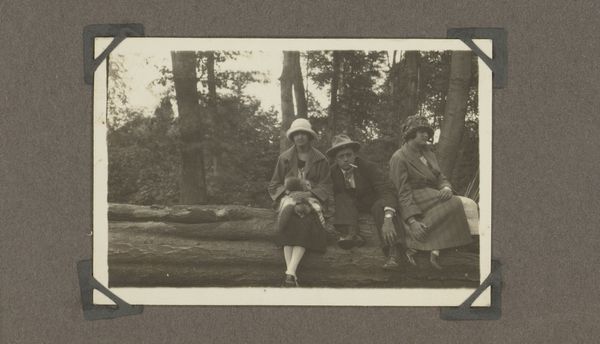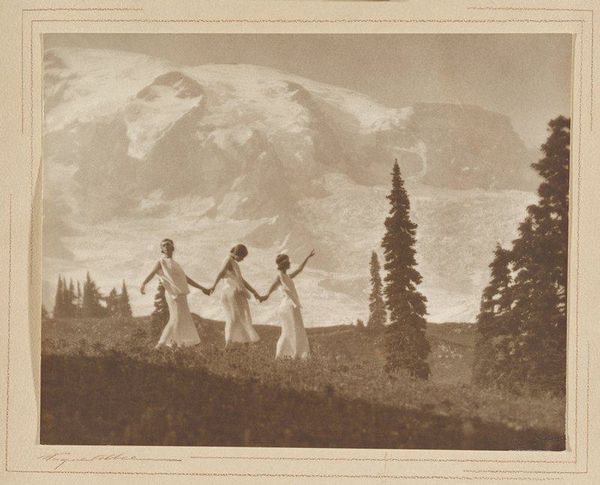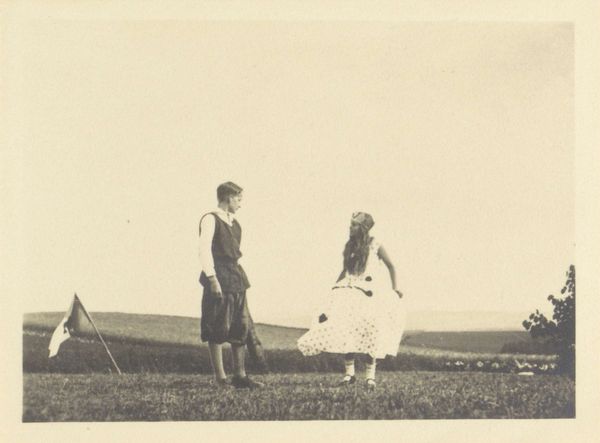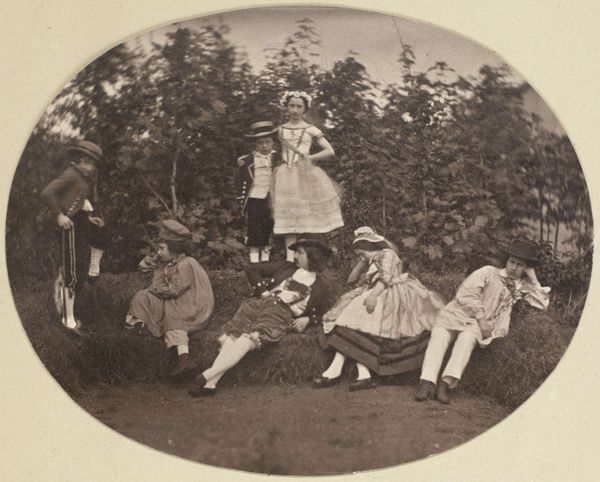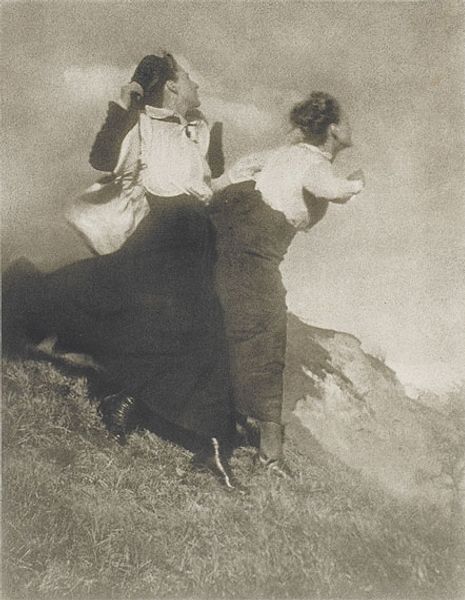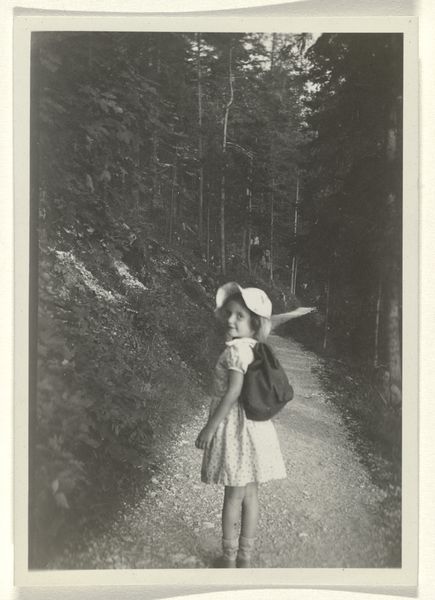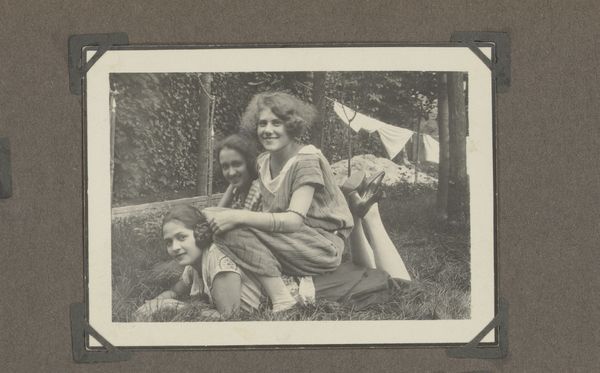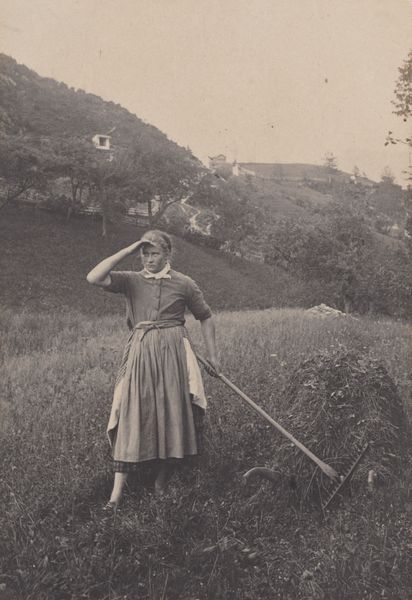
Waldemar Titzenthaler, de fotograaf, met zijn echtgenote Olga en kinderen Marba en Eckart zittend in een veld Possibly 1917 - 1918
0:00
0:00
Dimensions: height 64 mm, width 93 mm, height 74 mm, width 96 mm
Copyright: Rijks Museum: Open Domain
Editor: So, here we have Waldemar Titzenthaler's gelatin-silver print, likely from around 1917-1918, titled "Waldemar Titzenthaler, the photographer, with his wife Olga and children Marba and Eckart sitting in a field." It has a wonderfully soft, almost dreamlike quality. How do you interpret this work? Curator: Let's consider the materials themselves. The gelatin-silver print, a relatively accessible process at the time, suggests a certain level of democratization in image making. This isn’t a platinum print meant for elite consumption; it's potentially reproducible, designed for a wider audience and for family memories, despite the artistic treatment. Think about what it meant to capture such a family scene. Editor: You're suggesting it speaks to something broader about photography's role in society? Curator: Precisely. And notice the pose: seemingly candid, but carefully constructed. The labour of image-making is downplayed to emphasise a 'natural' moment, concealing its artifice. Was this accessible technology changing how families document themselves, moving away from staged studio portraits towards an aesthetic emphasizing everyday life? The material conditions allowed this form to flourish. Editor: So, you're saying that the very materiality of this gelatin-silver print makes accessible image production and it is transforming the way we percieve images in early XX century ? Curator: Exactly! And it pushes the boundaries of “high” art by examining the tools for material accessibility and labor, making the photograph a social commodity with expanding social significance. It's about what it captures as much as the means by which that capture becomes possible. Editor: I hadn't considered the role of the printing process itself to be so crucial, in terms of historical context! It shows accessibility. Curator: Precisely. Considering photography and art within historical material conditions expands the narrative around "Waldemar Titzenthaler, the photographer, with his wife Olga and children Marba and Eckart sitting in a field," from just the image of the subjects in it to the social context where making these photographs were meaningful.
Comments
No comments
Be the first to comment and join the conversation on the ultimate creative platform.

